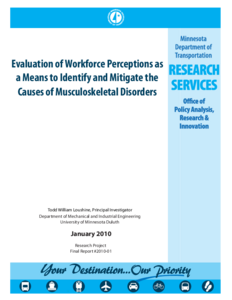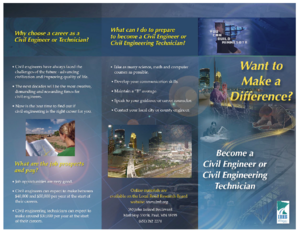Displaying results 1 - 10 of 33
Review of Workplace Wellness Program Options To Reduce Musculoskeletal Disorders In Laborious Work
Date Created
2011
Report Number
2011-07
Description
FAQ: Civil Engineering and Civil Engineering Technology
Date Created
2004
Report Number
2004-18FAQ
Description
Want to Make a Difference? Become a Civil Engineer or Civil Engineering Technician
Date Created
2004
Report Number
2004-18B
Description










